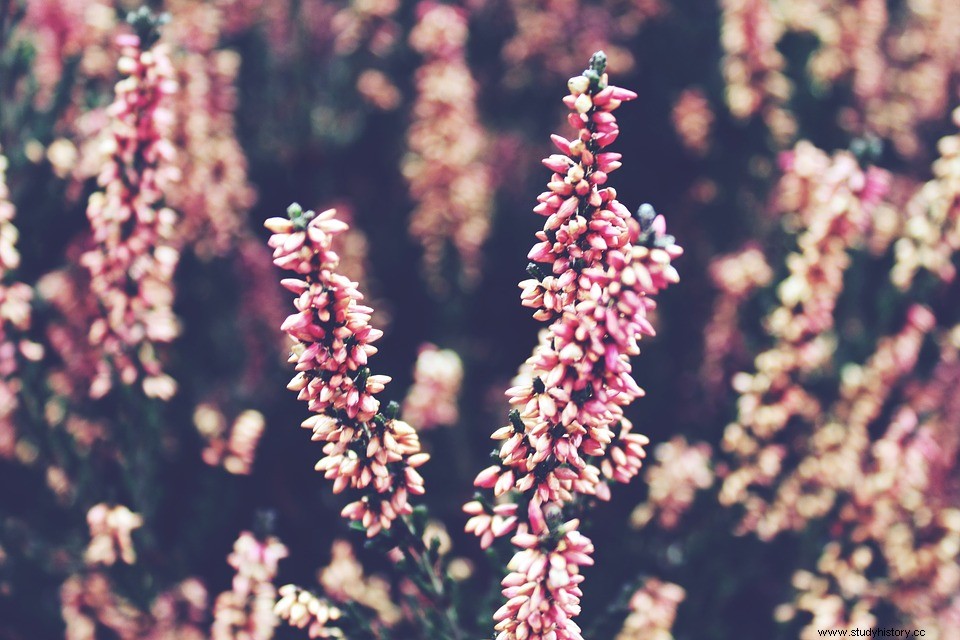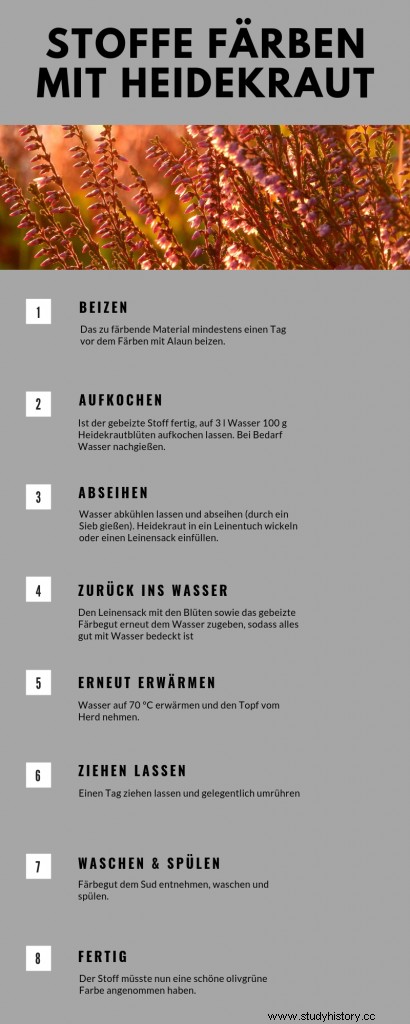Many of our product images are taken in the surrounding heathland near Wacken. Did you know that heather was important to people as early as the Middle Ages? In this article you will learn what the heather plant was used for.
Use of heather in the Middle Ages
It was used for different purposes. It was used to dye wool olive green. In barren areas it served as a food source for sheep and game. Beer was even made from it – the so-called Grutbier. In addition, heather honey was very popular in some areas.
The twigs of the heather plant were often used to make brooms, hence the generic name Calluna, which derives from the Greek word kalluno (=sweep, sweep).

Olive green dyeing with heather
When dyeing with heather, the flowers are used. The flowering starts in late summer, but you can also get the dried flowers in the pharmacy or from your trusted herbalist. If you want to collect the flowers, take your time, because the flowers are very small and collecting them is therefore a bit tedious.
To dye 100 g of dry fabric you need 100 g of flowers in 3 l of water.
First bring the flowers in the water to a boil. Since the flowers will swell, you can add water if the porridge is too thick. Then you let it all cool down.
When the water has cooled down, strain out the plant remains and wrap them in a linen cloth or put them in a linen bag. The bundle then goes back into the pot together with the pickled goods to be dyed. Then add enough water to cover the dyed items. Heat the water to approx. 70 °C and then remove the pot from the stove.
Let the pot stand for a day, stirring occasionally. At the end you should wash and rinse the dyed goods again properly. Finished! You should now find a strong olive green that holds up very well even after washing.

